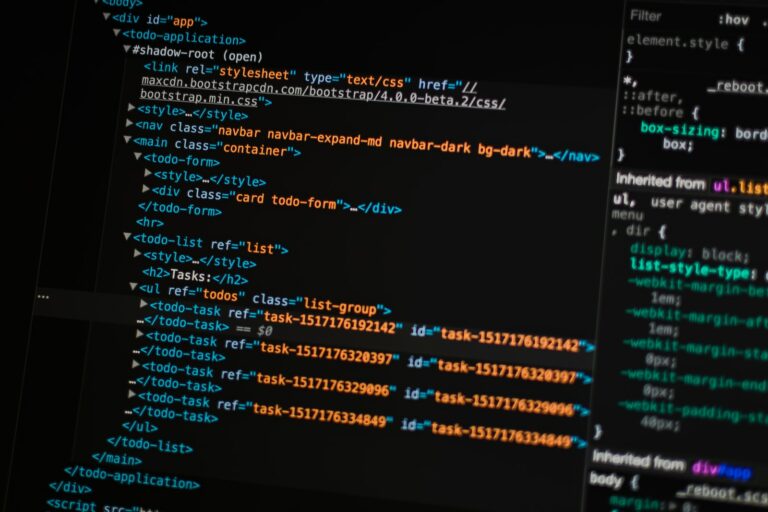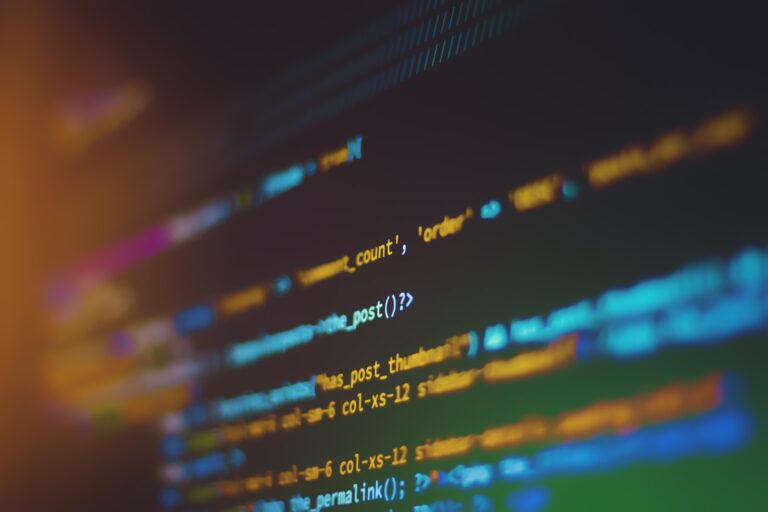Python is a versatile language that allows for a high degree of flexibility and customization in coding. One powerful feature of Python functions is the ability to use variable arguments, which provides more flexibility in function definition and allows for a variable number of arguments to be passed to a function. This is where *args and **kwargs come in.
*args and **kwargs are special syntaxes in Python that allow developers to pass a variable number of arguments to a function. While *args is used to pass a variable number of positional arguments, **kwargs is used to pass a variable number of keyword arguments. Understanding how to use *args and **kwargs is essential for developing advanced Python programs.
Key Takeaways:
- *args and **kwargs allow for variable arguments to be passed to a function in Python
- *args is used to pass a variable number of positional arguments
- **kwargs is used to pass a variable number of keyword arguments
Understanding *args in Python
When defining a function in Python, you typically specify a fixed number of parameters that the function can accept. However, there are situations where you may need to pass a variable number of arguments to a function. This is where the *args syntax comes in handy.
The *args syntax allows a function to accept a variable number of positional arguments. It works by collecting any extra positional arguments that are passed to the function and storing them in a tuple.
Here’s an example of how to define a function that uses *args:
Example:
def my_function(*args): for arg in args: print(arg)
In this example, the function my_function accepts any number of positional arguments and prints them out one by one.
Here’s how you would call this function:
Example:
my_function(1, 2, 3)
When you call this function with three arguments, it will print out each argument on a new line:
Output:
1 2 3
It’s important to note that you can use any variable name with the *args syntax, as long as it’s preceded by the * symbol.
For example:
Example:
def my_function(*my_args): for arg in my_args: print(arg)
This example is equivalent to the previous one, except we’ve used a different variable name for the *args syntax.
When using the *args syntax, it’s important to keep in mind that all positional arguments must come before the *args parameter in the function definition.
For example:
Example:
def my_function(a, b, *args): print("a =", a) print("b =", b) print("args =", args)
In this example, the function accepts two positional arguments (a and b) followed by any number of additional positional arguments stored in *args.
Here’s how you would call this function:
Example:
my_function(1, 2, 3, 4, 5)
The output from this function call would be:
Output:
a = 1 b = 2 args = (3, 4, 5)
By using the *args syntax, you can create functions that are more flexible and able to handle a wider variety of inputs.
Exploring **kwargs in Python
While *args allows a function to take in a variable number of arguments, **kwargs allows a function to receive a variable number of keyword arguments. Unlike *args, which stores arguments in a tuple, **kwargs stores keyword arguments in a dictionary.
To use **kwargs, you must precede the parameter name with two asterisks (**). This syntax tells Python to expect a dictionary of keyword arguments. Here’s an example of how **kwargs can be used in a function definition:
def my_function(**kwargs):
for key, value in kwargs.items():
print(f”{key} = {value}”)
In this example, any keyword argument passed to the function will be stored in the variable kwargs. The function then iterates over the dictionary using the items() method, printing each key-value pair to the console.
When you call a function that uses **kwargs, you can pass in any number of keyword arguments. The syntax for doing so is similar to passing arguments with *args:
my_function(name=”Jane”, age=25, city=”New York”)
In this example, the function is called with three keyword arguments: name, age, and city. These arguments are stored in the kwargs dictionary in the function.
One of the key benefits of **kwargs is that it allows you to pass in named arguments in any order. This can be useful when you have a function with multiple optional arguments, as it makes it easier to specify which values you want to use.
When using **kwargs, it’s important to keep in mind that the keys of the dictionary must be valid Python identifiers. This means they can’t contain spaces or special characters (with the exception of underscores), and they can’t start with a number.
Additionally, **kwargs can be combined with other arguments in a function definition. For example, you could define a function with both *args and **kwargs like this:
def my_function(arg1, arg2, *args, **kwargs):
print(f”arg1 = {arg1}”)
print(f”arg2 = {arg2}”)
for arg in args:
print(arg)
for key, value in kwargs.items():
print(f”{key} = {value}”)
This function takes in two required arguments (arg1 and arg2), followed by any number of positional arguments (*args), and any number of keyword arguments (**kwargs). When you call this function, you can pass in a combination of arguments:
my_function(“hello”, “world”, “a”, “b”, “c”, name=”John”, age=30)
When using **kwargs, it’s important to remember that the values are stored in a dictionary. This means you’ll need to use the correct syntax to access them. For example, to access the value of the “name” key in the kwargs dictionary, you would use kwargs[“name”].
Combining *args and **kwargs in Python functions
One of the powerful features of Python is the ability to use both *args and **kwargs in the same function. This allows for a flexible and dynamic way of passing arguments to a function.
To use both *args and **kwargs in a function, the syntax is as follows:
def my_function(*args, **kwargs):
In this example, the function is defined to accept both positional arguments (using *args) and keyword arguments (using **kwargs).
When calling this function, arguments can be passed in the following format:
my_function(arg1, arg2, kwarg1=value1, kwarg2=value2)
The positional arguments will be stored in a tuple, which can be accessed using the * operator. The keyword arguments will be stored in a dictionary, which can be accessed using the ** operator.
It is important to note that the order in which the arguments are specified when calling the function is important. Positional arguments should come first, followed by keyword arguments.
Let’s take a look at an example to see how this works in practice:
def my_function(*args, **kwargs):
for arg in args:
print(arg)
for key, value in kwargs.items():
print(key, value)my_function(1, 2, 3, name=’John’, age=30)
In this example, the function my_function takes in both positional arguments (1, 2, 3) and keyword arguments (name=’John’, age=30). When the function is called, the positional arguments are stored in the tuple args and the keyword arguments are stored in the dictionary kwargs. The for loop then prints out each argument and its value.
Output:
1
2
3
name John
age 30
Combining *args and **kwargs in a function can be incredibly powerful for creating flexible and dynamic functions that can handle a variety of input formats.
Best practices for using *args and **kwargs in Python
While *args and **kwargs can be powerful tools in Python programming, it’s important to use them effectively and maintain code readability. Here are some best practices for using function arguments in Python:
1. Use descriptive variable names
When defining arguments using *args and **kwargs, it’s important to use descriptive variable names that convey their purpose. This can improve code readability and make it easier for other developers to understand your code. Avoid using generic names like “args” and “kwargs”.
2. Avoid excessive use of *args and **kwargs
While *args and **kwargs can be useful for passing a variable number of arguments to a function, it’s important to use them judiciously. Overuse can make code harder to read and maintain. If a function only expects a fixed number of arguments, it’s best to define them explicitly rather than relying on *args and **kwargs.
3. Document your code
When using *args and **kwargs in your code, it’s important to document your function definitions and the purpose of each argument. This can make it easier for other developers to understand your code and use your functions effectively.
4. Test your code thoroughly
Whenever using *args and **kwargs, it’s important to thoroughly test your code to ensure it works as intended. This can help you catch potential errors or bugs early on and prevent them from causing problems down the line.
5. Maintain code readability
When using *args and **kwargs, it’s important to maintain code readability and organization. Use whitespace, indentation, and comments to make your code easy to read and understand. Consider breaking up long function definitions into smaller, more manageable pieces.
6. Avoid modifying *args and **kwargs
When using *args and **kwargs in your code, it’s best to avoid modifying them whenever possible. Modifying them can lead to unexpected behavior and make it harder for other developers to understand your code. If you need to modify an argument, consider creating a copy of it instead.
Common mistakes and pitfalls to avoid with *args and **kwargs
Although *args and **kwargs can greatly enhance the functionality and flexibility of Python functions, improper usage can lead to errors and bugs in your code. Here are some common mistakes and pitfalls to avoid when using *args and **kwargs:
- Not using descriptive variable names: When using *args and **kwargs, it can be easy to lose track of the purpose of each argument. Use descriptive variable names to make it easier to understand and maintain your code.
- Mixing up the order of arguments: When using both *args and **kwargs, it’s important to specify *args before **kwargs in your function definition. Getting the order wrong can cause unexpected errors.
- Using *args and **kwargs excessively: While *args and **kwargs can be powerful tools, using them excessively can make your code difficult to read and understand. Use them only when necessary.
- Not converting arguments to the correct type: When passing arguments using *args and **kwargs, make sure to convert them to the correct data type before using them in your function. Failure to do so can result in errors.
- Assuming a certain number of arguments: When using *args and **kwargs, it’s important to anticipate that the number of arguments may vary. Avoid making assumptions about the number of arguments being passed to your function.
By keeping these pitfalls in mind and following best practices for using *args and **kwargs, you can avoid common errors and ensure that your functions operate smoothly and efficiently.
Advanced techniques with *args and **kwargs in Python
Now that you’re familiar with the basics of *args and **kwargs, it’s time to explore some advanced techniques and creative use cases.
Using *args and **kwargs with Decorators
Decorators are a powerful feature of Python that allow you to modify the behavior of a function without changing its source code. You can use *args and **kwargs in combination with decorators to create more flexible and dynamic functions.
For example, you can create a decorator that automatically times how long a function takes to run:
Note: This example assumes familiarity with Python decorators.
import time def timer(func): def wrapper(*args, **kwargs): start_time = time.time() result = func(*args, **kwargs) end_time = time.time() print(f"Elapsed time: {end_time - start_time} seconds") return result return wrapper @timer def my_function(*args, **kwargs): # do some work passWhen you use the @timer decorator on a function that takes *args and **kwargs, the wrapper function will automatically receive all the arguments and pass them on to the original function. This allows you to time functions with any number of arguments.
Using *args and **kwargs with Lambda Functions
Lambda functions are small, anonymous functions that are often used in functional programming. You can use *args and **kwargs to pass arguments to lambda functions as well.
For example, you can create a lambda function that takes a variable number of arguments and returns their sum:
sum = lambda *args: sum(args)
print(sum(1, 2, 3, 4)) # output: 10
In this example, the lambda function takes a variable number of arguments using *args, and returns their sum using the built-in sum() function.
Using *args and **kwargs with Object-Oriented Programming
*args and **kwargs can also be used in object-oriented programming to create flexible and dynamic methods.
For example, you can create a class that has a method that takes a variable number of arguments:
class MyClass: def my_method(self, *args, **kwargs): # do something with args and kwargs pass
This allows you to call the method with any number of arguments and keywords, making it more flexible and versatile.
These are just a few examples of how you can use *args and **kwargs in creative and advanced ways in your Python code. With a solid understanding of their basics and these advanced techniques, you’ll be able to write more flexible, dynamic, and reusable code.
Conclusion
Using *args and **kwargs in Python can greatly enhance your programming capabilities. By allowing for a variable number of arguments to be passed to a function, developers can create more flexible and dynamic code.
Throughout this article, we have explored the differences between *args and **kwargs, as well as how to use them effectively in Python functions. We have covered best practices and common mistakes to avoid, as well as advanced techniques for utilizing *args and **kwargs in conjunction with other Python features.
It is recommended that you experiment with *args and **kwargs in your own code to fully understand their capabilities. As you continue to develop your Python programming skills, mastering *args and **kwargs will prove to be a valuable asset in your toolkit.
Thank you for reading, and happy coding!







